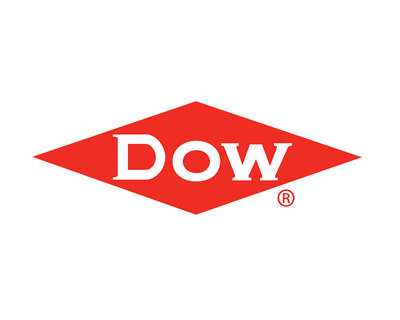Dow expands Propylene Glycol capacity in Thailand
Dow (NYSE: DOW) has announced the start-up of its expanded propylene glycol (PG) capacity at its Map Ta Phut manufacturing facility in Rayong, Thailand. The investment increases capacity by 80,000 tons per year, bringing the total annual output to 250,000 tons, making it the largest PG facility in the Asia Pacific region. This expansion aims to support growth in the personal care, pharmaceutical, food, and flavor & fragrance markets. The site’s back-integration ensures cost-competitive and reliable supply of key raw materials such as propylene oxide (PO). Dow is committed to sustainable PG production through the use of lower carbon energy sources and bio-circular feedstocks, with plans to secure ISCC PLUS certification for the facility by the end of 2024.
- Dow's expanded propylene glycol capacity in Thailand increases by 80,000 tons per year, reaching 250,000 tons annually.
- The Map Ta Phut facility becomes the largest PG manufacturing site in Asia Pacific.
- Expansion supports growth in high-value PG markets such as personal care, pharmaceuticals, food, and flavors & fragrances.
- Back-integration at the site ensures a cost-competitive and reliable supply of key raw materials like propylene oxide.
- Dow uses lower carbon energy sources and bio-circular feedstocks for sustainable PG production.
- Plans to secure ISCC PLUS certification for the Map Ta Phut facility by the end of 2024 demonstrate a commitment to sustainability.
- The press release does not mention the specific financial investment required for the expansion, potentially causing uncertainty among investors.
- The expansion's success is contingent on securing ISCC PLUS certification, which is not guaranteed and could face delays.
Insights
Dow's expansion of its propylene glycol (PG) capacity at the Map Ta Phut facility in Thailand is a strategic move aimed at strengthening its market position in the Asia Pacific region. The incremental investment increases the annual output to 250,000 tons, making this facility the largest PG manufacturing site in this region. This capacity increase is expected to generate higher returns due to both low capital intensity and the integration with key upstream raw materials like propylene oxide, ensuring cost competitiveness. This is important in markets such as personal care, pharmaceuticals and food, which have shown significant growth.
For investors, the financial implications are positive in the short term due to the cost-efficiency and immediate increase in production capacity. Long-term benefits include enhanced market leadership and sustainable growth, bolstered by a reliable and cost-competitive supply chain. However, it's important to monitor Dow's ability to secure ISCC PLUS certification, as it would validate their sustainability claims and potentially attract more eco-conscious customers and investors.
The expansion of Dow's PG capacity is a significant strategic move within the global chemicals market. The Asia Pacific region is one of the fastest-growing markets for PG, driven by increased demand in personal care, pharmaceuticals and food industries. By scaling up production, Dow is positioning itself to capitalize on this demand growth while also enhancing its regional leadership.
The integration with upstream raw materials at the Map Ta Phut site provides Dow with a competitive edge in terms of cost efficiency and supply chain reliability. Additionally, the focus on sustainable production using lower carbon energy sources and bio-circular feedstocks aligns with global sustainability trends, potentially attracting environmentally-conscious clients. However, Dow's success in capitalizing on these opportunities will depend on effective market penetration and competitive pricing strategies.
Increased capacity to advance downstream propylene glycol growth in personal care, pharmaceutical, food and flavor & fragrance markets
The back-integration at the Map Ta Phut site provides a cost competitive supply of key upstream PG raw materials such as propylene oxide (PO) and ensures a reliable supply position to aid growth in downstream high-value PG markets.
"As one of the fastest growing and most dynamic regions in the world, this capacity expansion helps strengthen our innovation and manufacturing capabilities for our customers in
Dow's leading propylene glycol franchise upgrades basic chemical building blocks to produce high-quality ingredients for cosmetics, food, pharmaceuticals, and many other products for everyday use. The company is advancing sustainable PG production using lower carbon energy sources, and by implementing the use of bio-circular and circular feedstocks using the mass balance approach under ISCC PLUS certification at PG manufacturing facilities worldwide. To date, Dow has launched new PG solutions with externally verified sustainability benefits in
Discover more about Dow propylene glycol solutions.
About Dow
Dow (NYSE: DOW) is one of the world's leading materials science companies, serving customers in high-growth markets such as packaging, infrastructure, mobility and consumer applications. Our global breadth, asset integration and scale, focused innovation, leading business positions and commitment to sustainability enable us to achieve profitable growth and help deliver a sustainable future. We operate manufacturing sites in 31 countries and employ approximately 35,900 people. Dow delivered sales of approximately
For further information, please contact:
Sarah Young
Dow
989.638.6871
Syoung3@dow.com
X: https://twitter.com/DowNewsroom
Facebook: https://www.facebook.com/dow/
LinkedIn: http://www.linkedin.com/company/dow-chemical
Instagram: http://instagram.com/dow_official
![]() View original content to download multimedia:https://www.prnewswire.com/news-releases/dow-expands-propylene-glycol-capacity-in-thailand-302146909.html
View original content to download multimedia:https://www.prnewswire.com/news-releases/dow-expands-propylene-glycol-capacity-in-thailand-302146909.html
SOURCE The Dow Chemical Company







